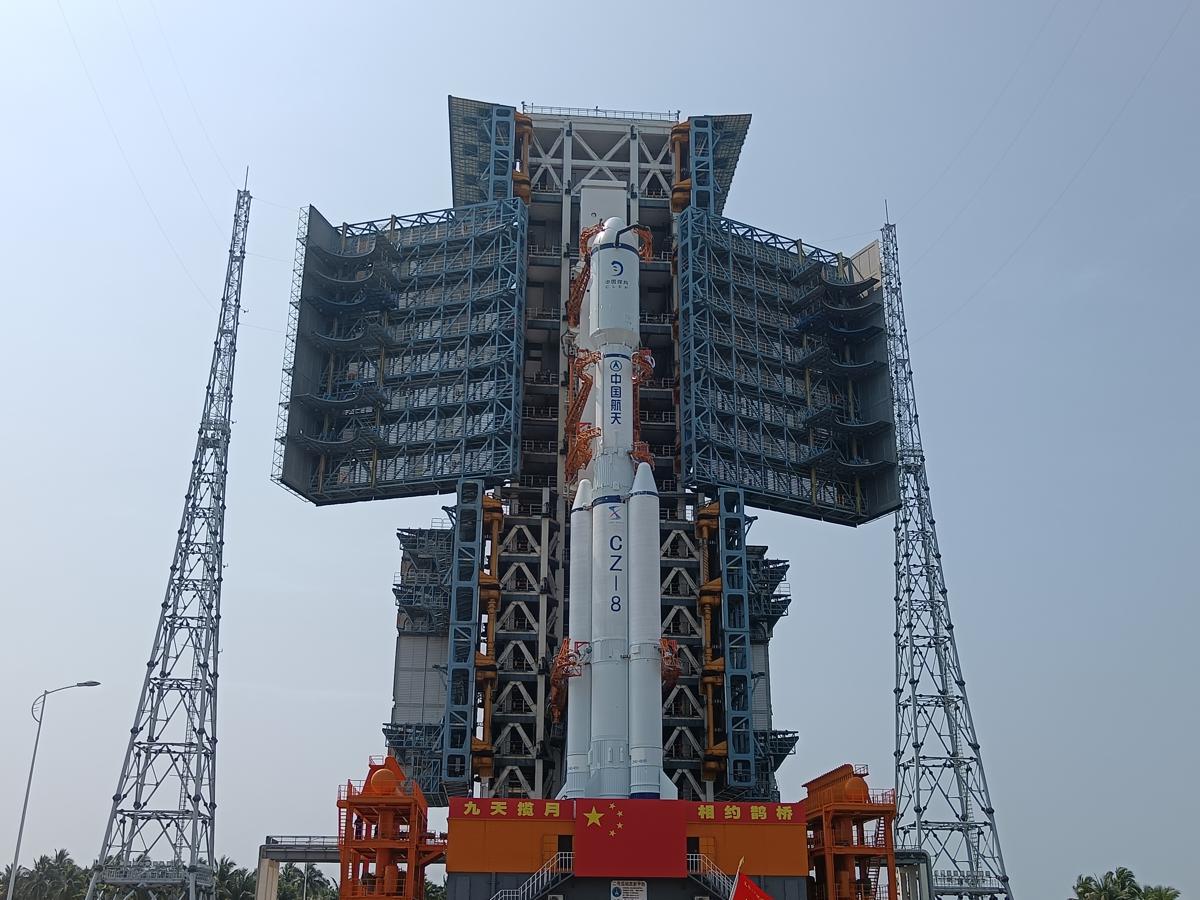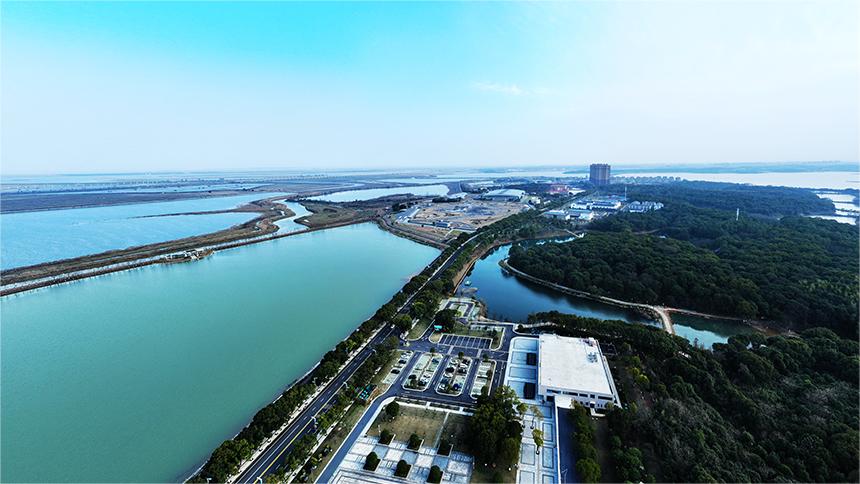Lunar relay satellite all set for launch

The relay satellite Queqiao 2 and the Long March 8 carrier rocket are vertically transferred to the launch area of the Wenchang Space Launch Center in Hainan province on Sunday. The satellite is expected to be launched at an appropriate time in the next few days. [Photo/Xinhua]
A relay satellite essential to the upcoming Chang'e 6 moon mission and other future lunar exploration programs is scheduled for launch within the next few days, according to the China National Space Administration.
The combination of the relay satellite Queqiao 2, or Magpie Bridge 2, and a Long March 8 carrier rocket, tasked with lifting the satellite, was moved on Sunday morning to the launching tower at Wenchang Space Launch Center in Hainan province.
The satellite and the rocket were individually transported in February to the Wenchang center, where they were examined and assembled. The rocket will undergo final checks before propellants are loaded, the space administration said in a news release. The launch will take place in due course, it noted.
Queqiao 1, the predecessor of Queqiao 2, was lifted by a Long March 4C rocket from the Xichang Satellite Launch Center in Sichuan province in May 2018. It currently serves as a relay platform for the Chang'e 4 lunar mission.
The Chang'e 4 probe landed in the South Pole-Aitken Basin on the far side of the moon in January 2019, becoming the first spacecraft to be operated on the little-known semisphere.
If everything goes according to plan, the Chang'e 6 probe will be launched in the first half of the year, and will become the second spacecraft to reach the moon's far side. It is tasked to bring back samples from the lunar far side, an assignment that is challenging, sophisticated and has never been done before.
Communication services between the Chang'e 4 and Chang'e 6 spacecraft and the Earth require relay satellites due to their special locations. Transmitting signals is thus the primary task of Queqiao 1 and 2.
Pang Zhihao, an expert on space exploration technology who worked at the China Academy of Space Technology for decades, said the fact that Queqiao 2 will be transported using a Long March 8 rocket indicates that this relay satellite is larger and heavier than its predecessor.
"As far as I understand, the Queqiao 2 has been designed to have more functions and a longer life span. It will be key to China's next several lunar missions," he said.
The Chang'e 6 spacecraft will have four components — an orbiter, a lander, an ascender and a reentry module. In addition to sample collection instruments, it will also carry scientific instruments from Pakistan, France, Italy and the European Space Agency, according to its mission planners.
Photos
Related Stories
Copyright © 2024 People's Daily Online. All Rights Reserved.









